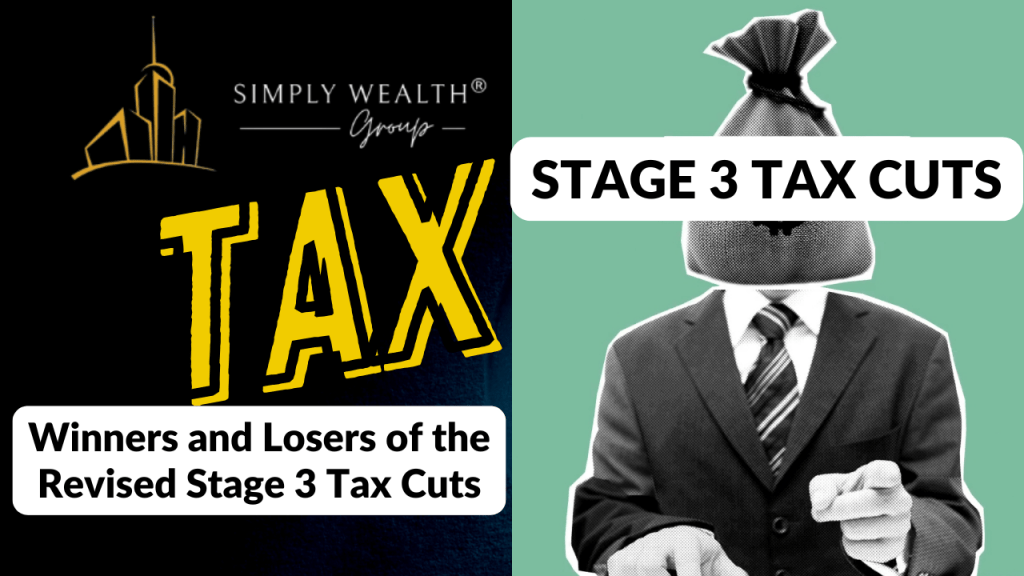Winners and Losers of the Revised Stage 3 Tax Cuts
The Stage 3 tax cuts have been a significant topic in Australia’s financial landscape, drawing varied reactions across income groups, electorates, and political parties. Originally designed to simplify the tax system and lower the burden on higher income earners, these tax cuts have evolved to address broader economic equity.
Let’s break down who stands to gain and who might lose out under the revised framework.
Introduction to Stage 3 Tax Cuts
Stage 3 tax cuts refer to the final phase of tax reforms initially proposed to overhaul Australia’s income tax brackets. These cuts aim to eliminate the 37% tax bracket and adjust the thresholds for existing brackets, reducing taxes for many Australians. Recent changes have introduced a new perspective, emphasizing greater relief for middle and lower-income earners while slightly scaling back benefits for higher-income groups.
Winners of the Revised Stage 3 Tax Cuts
With the revised tax cuts, certain groups are set to benefit more than others. From rural residents to middle-income earners and key electorates, these changes are designed to provide financial relief where it’s needed most. Let’s dive into who stands to gain from these shifts and why they’re celebrating.
Rural and Outer-City Residents
One of the most notable shifts in the revised Stage 3 tax cuts is the benefit distribution favoring residents of rural and outer-city areas. Analysis indicates that these taxpayers will receive significant relief compared to their urban counterparts. For instance, data highlights that some outer Adelaide residents stand to gain an average of $486 annually under the new structure. This change addresses economic disparities by channeling more benefits to regions that traditionally experience higher financial pressure.
Middle and Low-Income Earners
Middle and lower-income earners are clear beneficiaries of the new approach. By reallocating savings to these groups, the revised tax cuts aim to boost disposable income, fostering local spending and economic resilience. This policy change marks a pivot from prior iterations that heavily favored higher-income earners, instead promoting a progressive tax system that supports economic equity.
National and Labor-Held Electorates
Certain electorates represented by the National Party and Labor seats will receive increased average benefits. These areas have been strategically targeted to support working families and communities that would greatly benefit from the additional financial relief. This focused redistribution underlines the government’s intent to prioritize economic support where it can have the most social impact.
Estimated Annual Benefits by Income Bracket
| Income Bracket (AUD) | Estimated Annual Benefit (AUD) |
|---|---|
| $45,000 – $60,000 | $450 – $500 |
| $60,001 – $90,000 | $500 – $700 |
| $90,001 – $120,000 | $700 – $900 |
| $120,001 – $180,000 | $300 – $500 |
| Above $180,000 | Minimal or no benefit |
Losers of the Revised Stage 3 Tax Cuts
Affluent Inner-City Suburbs
High-income earners in affluent areas, such as Sydney’s eastern suburbs, are among the primary groups facing reduced benefits. Electorates like Wentworth, where residents previously anticipated higher tax savings, will now see a potential loss averaging $862 annually. This adjustment is part of a broader shift to limit advantages for wealthier Australians and redirect resources to those in greater need.
High-Income Earners
The policy’s revised focus on economic redistribution means that individuals earning above a certain threshold will receive comparatively less benefit than initially promised. While the cuts still simplify the tax structure, they no longer provide the same degree of relief to the top earners. This change ensures that the tax system remains progressive, preventing income inequality from widening further.
Impact on Independent Electorates
Electorates represented by independent MPs, particularly those advocating for climate action and fiscal responsibility, may not see significant gains under the revised Stage 3 tax cuts. These areas typically feature diverse income levels, with many constituents experiencing lower benefits compared to prior expectations.
Economic and Social Implications
Boosting Local Economies
The revised tax cuts’ focus on middle and low-income earners is expected to enhance local economies. With more disposable income, these groups are likely to spend on essential goods and services, potentially spurring economic growth. This shift aims to strengthen Australia’s economic resilience by empowering everyday citizens rather than concentrating benefits at the top.
Addressing Inequality
The redistribution of tax savings reflects the government’s commitment to addressing income inequality. By scaling back benefits for higher-income earners and enhancing support for middle and lower-income groups, the Stage 3 tax cuts seek to foster a more balanced financial landscape.
Political Reactions and Public Sentiment
Political and public reactions to the revised Stage 3 tax cuts have been mixed. While many support the changes for promoting fairness, some critics argue that scaling back higher-income benefits could disincentivize top earners and potentially impact investment behaviors. Notably, community surveys have shown broad support for changes that prioritize economic equality, with MPs from various backgrounds weighing in on both sides of the debate.
Conclusion: A Balanced Approach to Tax Reform
The revised Stage 3 tax cuts mark a shift towards greater economic inclusivity, channeling more support to those who need it most. While higher earners and affluent suburbs may experience reduced benefits, the policy’s focus on strengthening the middle class and addressing regional disparities presents a forward-looking approach to tax reform. This balance seeks to ensure a more resilient, equitable economic future for Australia.
For those serious about maximizing returns, consulting with professionals is key to securing every eligible deduction, also look through top 5 tax deduction mistakes for deeper understanding of tax education. Take control of your financial future today by visiting our website and exploring our tax insights. Check out our latest blog on Weekly Tax Table vs. Fortnightly Tax Table and our tax education blog for more valuable information!
Disclaimer: The information provided here is general in nature and should not be considered as professional tax advice. For specific tax guidance, please consult a qualified tax professional or visit the ATO website.








